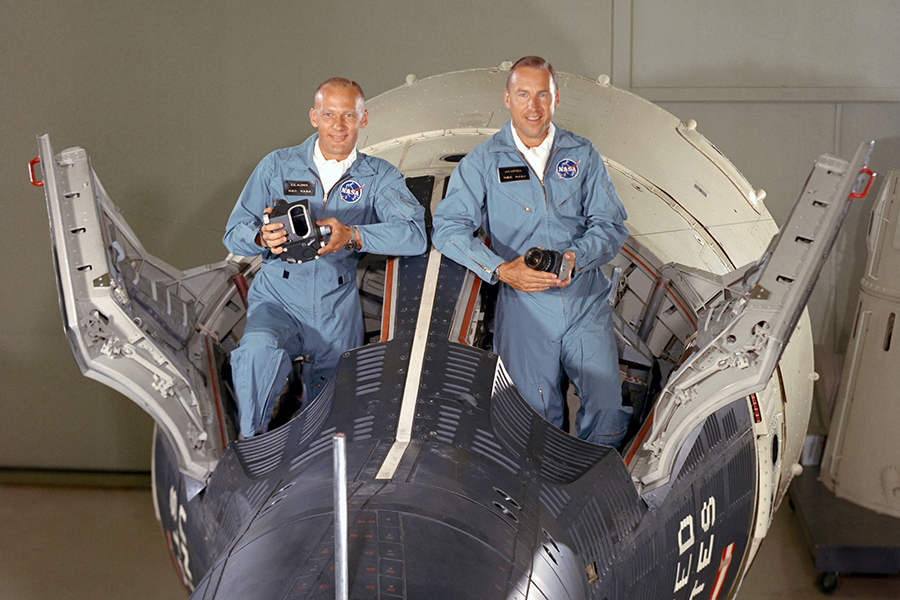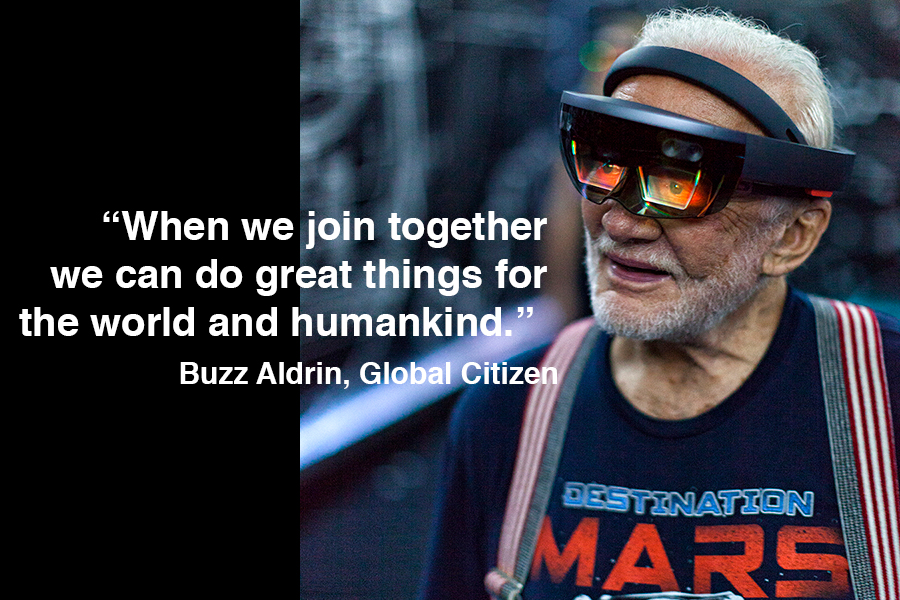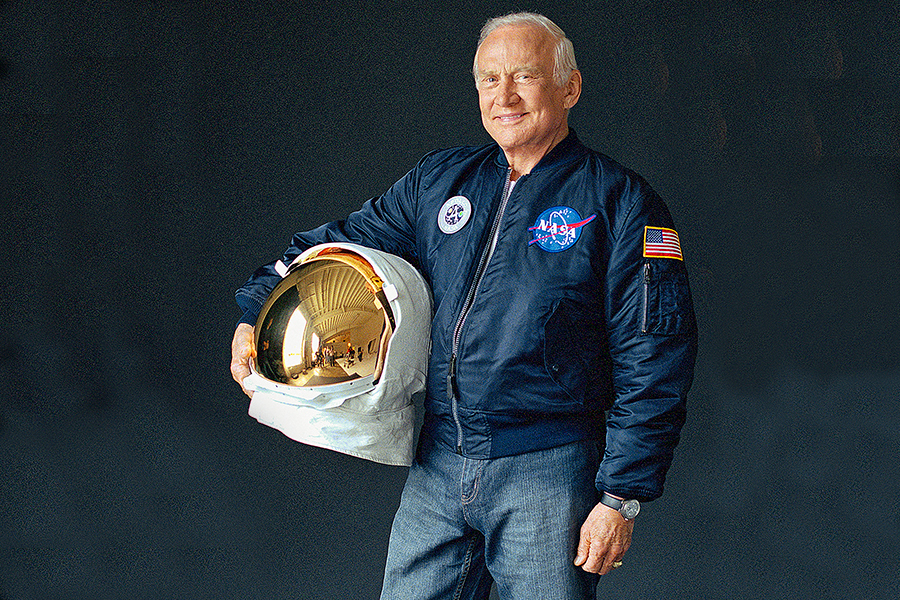Edwin “Buzz” Aldrin, The Second Man To Walk on The Moon, is Now Aiming For Mars. He reckons we need the big thinking of the 1960s to push beyond our current limits.
I’m backstage at Radio City Music Hall in New York, being ushered towards a meeting with a man who walked on the moon. Buzz Aldrin will shortly be addressing thousands of screaming kids at a WE Day event, a national phenomenon started by 12-year-old Craig Kielburger 22 years ago with his brother Marc, that rewards children who give service to their communities.
I’m nervous and intrigued at the same time. Someone who has left planet Earth and bounced around a dusty rock in space must surely possess some serious philosophical insights, almost magical. The journey down the dark passageways that lead to Aldrin’s backstage dressing room feels like a re-enactment of the Apollo moon mission itself. Out of the gloom, stars emerge and then dissolve behind me, leaving a trail of excitable assistants and rustling pages on clipboards: Martin Luther King III, Paula Abdul, Mia Farrow, Daya and Rowan Blanchard.
I hear Aldrin before I see him. “I’m afraid he may want to continue doing S1LI,” the raspy voice booms from a door with “Mr. Buzz Aldrin” displayed in typical showbiz fashion.
“S1L1 is a waste of time,” he continues. “They have a lot of detail, but it’s not complete.” As I settle into my chair alongside the 87-year-old space legend (and a giant make-up mirror surrounded by light bulbs), I learn that Aldrin is debating the trajectory to Mars with his manager Christina, who doubles as a translator to the galactically-challenged, like myself. The Apollo 11 mission to the moon may have ended 48 years ago, but Aldrin is still out there, in his mind, plotting the next conquest of space. These aren’t the ramblings of an old astronaut past his prime either. His ideas on getting orbiting objects in space to rendezvous, formulated in the 1950s, are today part of the planning for Mars, even adopted by Elon Musk’s SpaceX program.

With his white hair, beard and full, rosy cheeks, Aldrin would not look out of place as a kindly Santa Claus in Macy’s. He’s dressed like one of those cool, old guys who will forever stay young inside. He wears a “Destination Mars” T-shirt, suspenders printed with the American flag, a watch strap with two watch faces and various glass bangles, one of which spells out “B-U-Z-Z” on four separate cubes. He looks more rock star than geriatric space explorer.
“Believe it or not, I was once a kid who dreamed big dreams,” he says. “I took an oath at aged 17 at West Point to serve my country. Back then if space was going to be the next frontier I wanted to be a part of it. The first time I applied to be an astronaut I was turned down, but I was determined and applied again. Because of my perseverance NASA finally accepted me,” he recalls. Perseverance is certainly one of his biggest traits. Three marriages and a battle with alcoholism and clinical depression would knock most people off course, yet here he is, standing tall at 87 and shortly to inspire thousands of teenagers on a stage nearby. “By the way,” he tells them later, “Did you know we took the first selfie in space – in 1966.” He points to a huge projected image behind him of the iconic photograph taken by Neil Armstrong, who is reflected in his visor. “Many people have asked me why that picture is so important. I have three words: location, location, location.”

The United States had the highest education rankings at the time of the moon landing, and Aldrin knows those are past glories. “We need to put a lot of attention into math, science and engineering,” he says. “It may sound a little too geeky, but that’s good, it advances things. The question is: Will governments put money behind geeky things? Maybe we need to include the arts too? After all, when has rote learning ever created a fertile, inventive mind?”
“Let me say, as I sit here before you today having walked on the moon, that I am myself still awed by that miracle. That awe, in me and in each of us… must be the engine of future achievement, not a slow dimming light from a time once bright. ”
The world welcomed the Apollo crew back as heroes from the moon, but they knew the crowds weren’t just cheering for three guys, but for humanity – what they had achieved as the human race. They had accomplished the impossible. Aldrin thinks we need more, big symbolic events to bring the world closer together again. “When we join together we can do great things for the world and humankind. We proved that back in 1969.”
“People ask me why we need to go to Mars, why we need a space program. By venturing outward into space and making those investments, we improve life for everybody here on earth; the technology, the medical advances. So much of what we have today would not have been possible were it not for the finances that went into the space program.”
Closing his act on stage that evening, he yells over the screaming audience, “We need to push beyond our present limits just like we did in 1969. No dream is too high. I know because I am living proof that it can be done and it will be done through service and teamwork. Let’s go for it; you can do it, we can do it!” Then, he salutes, turns sideways and does a Michael Jackson “moonwalk” off the stage. What a stellar guy.




































